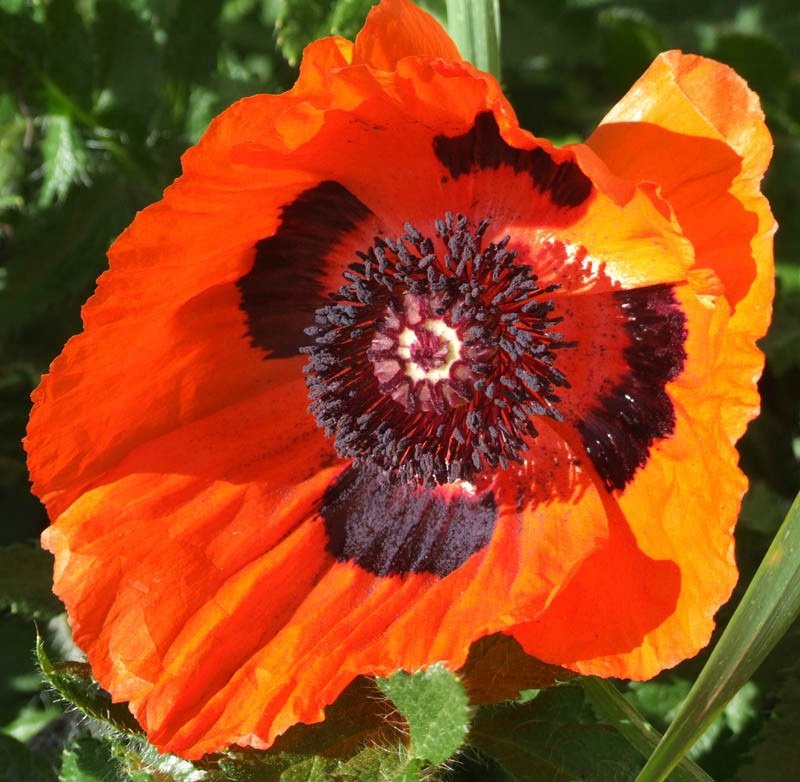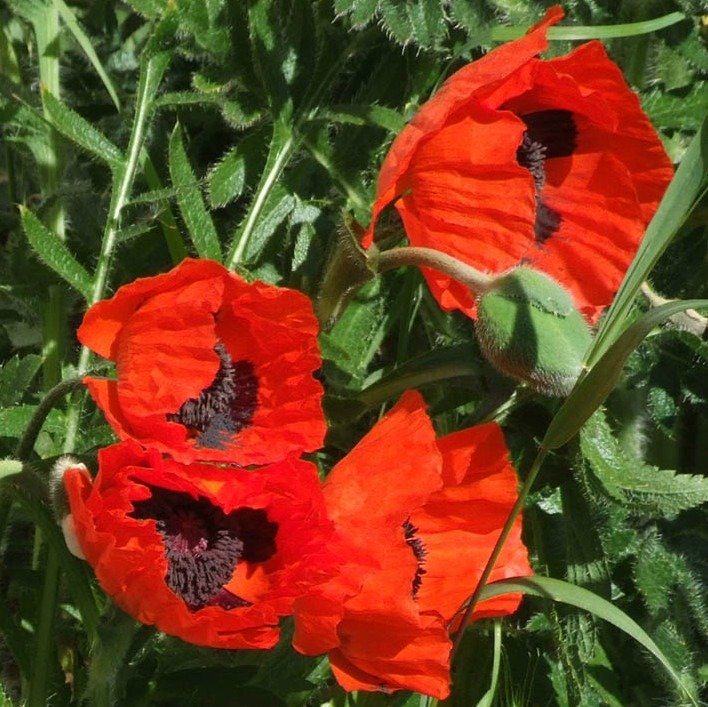Many of the more "traditional" artists we meet through our gallery are often expressing their concern that technology-- and the online environment in general-- is killing art.
Change is NOT Death

"Red Poppy"
There's no doubt that tehnnology is changing the nature of art... but it also seems to me that we need to look towards new horizons for art and creativity, rather than write art off as "dying."
Let's start with the fact that art is not an "invention" like-- for example-- the "horseless carriage," which pretty much put horses and blacksmiths out of business. Art is something that has been with us pretty much since the dawn of the species. It's not a "thing," it's a form of expression.
So to say that art is "dying" would be a similar argument to someone thousands of years in the past declaring that "art is dying" because it occurred to someone to paint on a portable piece of bark, rather than on a nice permanent cave wall.
See the connection?
Of course, we know the above scenario is not true.
So What Are We Afraid Of?

"Lucky"
Change tends to be scary because we are generally not prepared for it. That is to say, we often can't prepare for it, because we don't know what form it will take.
And if we have been depending on something "being a certain way" as a means to afford us a living, that change feels so much more like a threat.
I have the luxury of being able to compare my old gallery (1985-99) to my current one (since 2006) and I can very clearly see some of the things that are different because of technology... and how those changes affect not only how we look at art, but how art is "consumed."
Smartphones and Copyright Issues
"Back in the day" it was pretty much understood that you were not allowed to photograph at most museums, and it was considered "rude" to do so at art galleries-- at least without first asking the gallery manager for permission.

"Cold Seat"
In 2017, we see more and more smartphone photos taken at the gallery. It never even occurs to people that they should not photograph everything.
Some of our (mostly older) artists are alarmed and start talking about "copies" and copyright laws... but on reflection, I am coming to believe that might be a minor issue. If you look at the world around us, more and more people-- especially under age 30-- live most of their lives through the lens of a cameraphone and posting to social media.
Rather than focusing so much on the copyist issue, maybe we should consider that going to a gallery and photographing "some art" is not a whole lot different from being at a restaurant and photographing a taco. It's just a part of 21st century interpersonal communication... part of this thing that's increasingly referred to as the "Attention Economy."
Give and Take: Stepping OUTside the Technology

"Threatening Skies"
Maybe-- as part of what we are afraid of-- we are focusing too much on what technology is "taking away," and not enough on what it is "giving" us.
For example, we are now featuring digital artists' work, for the first time... offering physical framed prints made from art that never existed in physical space until it became a signed print, which we framed and hung on the wall. Oddly enough, people find this transition from virtual space to real-space quite appealing.
And there are more possibilities: For example, check out @voronoi's excellent article from yesterday Snapchat Public Art + Augmented Reality which shows how social media giant Snapchat is creating digital worlds that can be viewed in the context of physical spaces... a totally new way to create art for public spaces. But it's not making art obsolete.
The Future of Art... Hands-On

"Red Poppies"
Here's an interesting trend we've been observing for some time-- and it's a trend that points to art being safe and sound, in the future.
We see more and more clients visit our gallery, and talk about how they have recently taken up some form of creative endeavor and art. Of course, nothing super unusual about that-- except their reasoning: People are wanting to create with their hands, rather than sitting there tapping on a screen or keyboard. They want to get their hands into clay; and draw things with a pencil and paper, not with a graphics program.
Of course, for many it is merely a type of diversion or therapeutic exercise... but some of those will be drawn into the magnetic world of art and become the creators of the future.
Art-as-experience vs. Art-as-object
Perhaps the biggest-- and yet most subtle-- trend I have observed between the 1990's and 2017 is in how people-- especially younger-- approach art.

"Evening Wake"
When I started in the gallery business, a piece of art was very much an "object." And, as an object, it was something you could potentially "possess" or "own."
Today, many more people approach art as more of an experience. That is, you see it and feel something but that's independent of a desire to "own" it. The ubiquitous smartphone photo "documents" the experience.
So what do we do about that, as artists?
The most feasible approach is what we now pursue with many artists-- in offering and selling both postcards and inexpensive prints of the originals. In a sense, we are adapting a version of web marketing guru Seth Godin's approach in which there IS no "product," because the product is an experience... and we simply sell "souvenirs" (prints and postcards) of that experience.
So far, it has been fairly successful.
Thank you for reading! This post about art was created as part of the @sndbox initiative.
The Red Dragonfly is an independent alternative art gallery located in Port Townsend, WA; showcasing edgy and unique contemporary art & handmade crafts by local and worldwide artists. All images are our own, unless otherwise credited. Where applicable, artist images used with permission.
